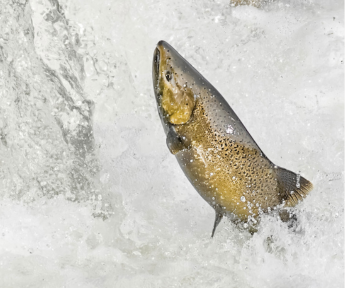Abstract
Restoring the relationships, rights, and responsibilities of Indigenous Peoples to their salmon kin is central to a sustainable and just future with Pacific salmon, particularly as Nations lead the restoration of freshwater salmon habitat in their territories. As a group of Indigenous and non-Indigenous researchers from across British Columbia, we come together in a respectful and transparent way to uphold ancestral Indigenous Pacific salmon stream caretaking knowledge, longstanding Indigenous rights and relationships to land and waters, and our joint responsibilities to care for these watersheds. To do this, we begin by describing traditional governance systems that house Indigenous salmon stream caretaking practices. Through a literature review and conversations with co-authors, we then describe eight Indigenous salmon stream caretaking practices. Finally, we share three contemporary focal stories of Indigenous salmon restoration projects that uphold ancestral knowledge; “Syilx sockeye restoration”, “səlilwətaɬ (Tsleil-Waututh) led salmon habitat restoration in xʔə’l̓ilwətaʔɬ (Indian River Watershed)”, and nuučaanuɫ (Nuu-chah-nulth) Peoples and salmon: responsive methods through steadfast lifeways’. We present stream caretaking knowledge and the focal stories as learning opportunities that may guide future human-salmon relationships and restoration.
Introduction
Social-ecological crises are profoundly altering ecosystems and inequitably impacting communities, spurring recognition of the need to centre equity and diversity in restoration, management, and conservation (Brown and Brown 2009; Corntassel 2012; Elias et al. 2021; Parsons et al. 2021; Salomon et al. 2023). These crises are impacting Indigenous lands and waters that have been cared for over generations through ancestral knowledge and governance systems. In various ecosystems, from forests (Dickson-Hoyle et al. 2022), to beaches (Wickham et al. 2022), to rivers (Fox et al. 2017), guided by ancestral knowledge, Indigenous Peoples are restoring their lifeways and caretaking practices by asserting their rights and relationships with the land. Within the Pacific salmon (Oncorhynchus spp.) region, from California to Alaska, Indigenous Peoples have developed deep, reciprocal relations with their salmon kin over thousands of years. These relationships continue today despite declining salmon populations, degradation of freshwater salmon habitat, and fisheries management that too often ignores generational Indigenous rights and relations to lands and waters (Fig. 1, Atlas et al. 2021; Coté 2022; Reid et al. 2022; Esquible et al. 2024). Indigenous Peoples’ relationships with their salmon kin offer an incredible learning opportunity to guide salmon habitat restoration that embraces ancestral Indigenous knowledge, for the potential benefit of all (see Table 1 for key definitions).


